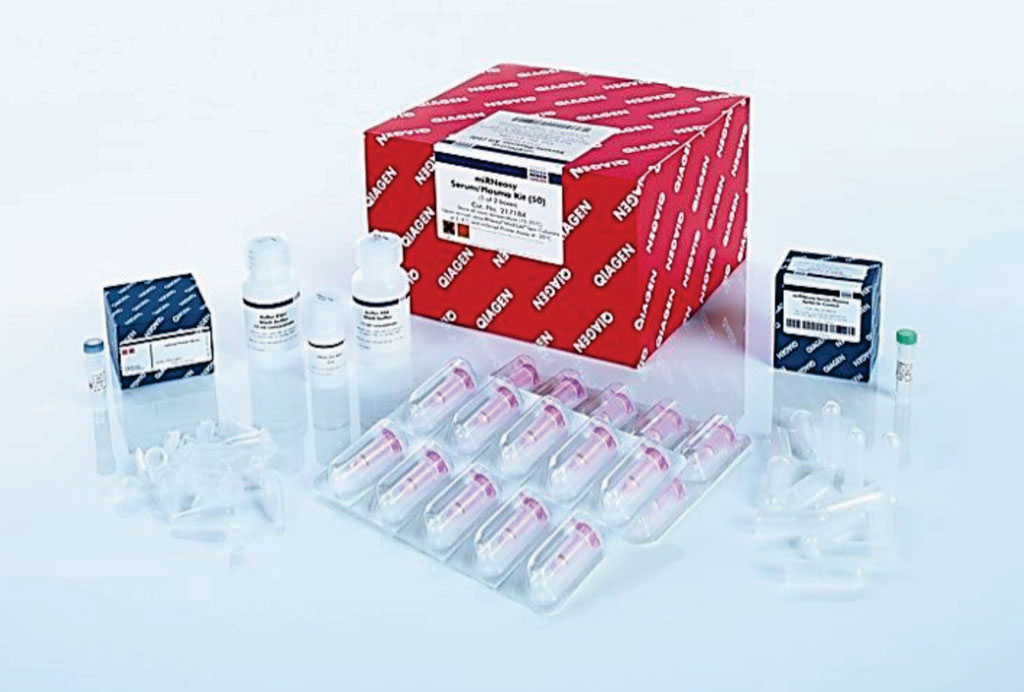Serum MiR-122 Levels Associated with Histopathological Features of NAFLD
By LabMedica International staff writers
Posted on 28 Dec 2016
Non-alcoholic steatohepatitis (NASH) can only be diagnosed by the presence of histopathological components, such as steatosis, lobular inflammation, ballooning, and fibrosis and therefore there is a need for non-invasive surrogate markers of histopathological features.Posted on 28 Dec 2016
Non-alcoholic fatty liver disease (NAFLD) is currently the most common liver disease worldwide across different ethnicities and associated is with serious healthcare issues including NASH, which may lead to liver cirrhosis, hepatocellular carcinoma (HCC), and liver failure.

Image: The miRNeasy serum-plasma kit is designed for purification of cell-free total RNA (Photo courtesy of Qiagen).
Scientists at the Toranomon Hospital (Tokyo, Japan) diagnosed a total of 321 Japanese patients with NAFLD based on histopathological examination of liver biopsies between 1980 and 2016. Of these, 39 patients underwent at least two liver biopsies and were evaluated in detail clinically over time. The need for repeated liver biopsies was determined by the attending physician. Of the 39 patients, 36 did not develop HCC during the period from the first to the second biopsy (median: 4.6 years, range: 0.5-19.0 years).
Liver histopathology was performed and NAFLD activity score represented the sum of steatosis, lobular inflammation, and hepatocyte ballooning scores. Serum samples were obtained at least twice a year after the time of histopathological diagnosis of NAFLD. Circulating microRNA was extracted from serum samples using the QIAGEN miRNeasy serum-plasma kit (Qiagen KK, Tokyo, Japan). Serum miR-122 was amplified using primers and probes provided by Applied Biosystems (Foster City, CA, USA). The serum miR-122 ratio was represented serum miR-122 level at second biopsy to that at first biopsy.
In patients who showed improvement of histopathological scores (steatosis, ballooning, and stage), serum miR-122 levels were significantly lower at second biopsy than first biopsy. In patients who showed no improvement, the changes at second biopsy were not different from those at first biopsy. There were significant and strong associations between serum miR-122 ratio level at second biopsy to that at first biopsy and changes in histopathological scores (of steatosis, lobular inflammation, and stage). There were also significant and strong associations between serum miR-122 ratio and changes in other clinical parameters, including aspartate aminotransferase and alanine aminotransferase.
The authors concluded that longitudinal examination of serial liver biopsies showed significant association of serum miR-122 with histopathological features of NAFLD in patients free of HCC. The study was published on December 7, 2016 in the journal BMC Gastroenterology.
Related Links:
Toranomon Hospital
Qiagen
Applied Biosystems













